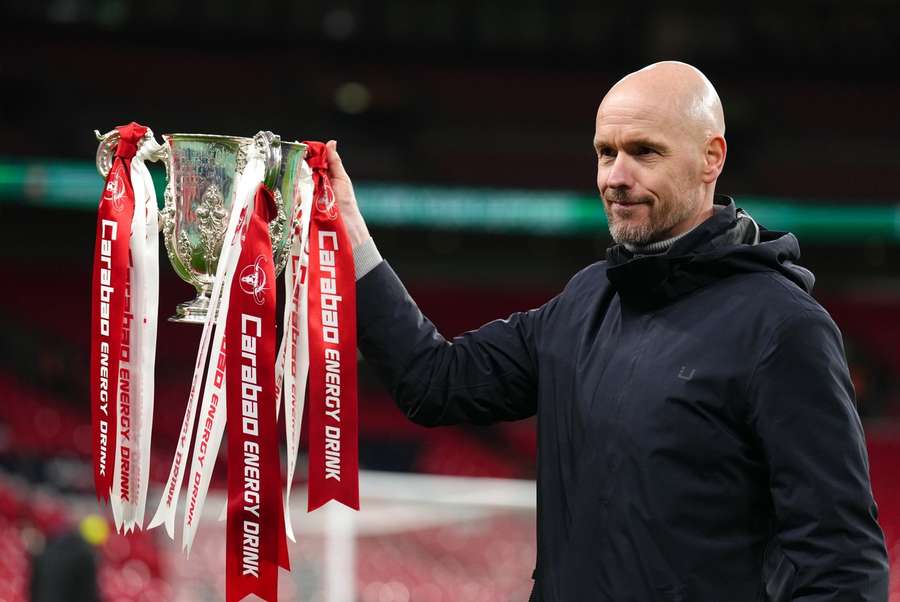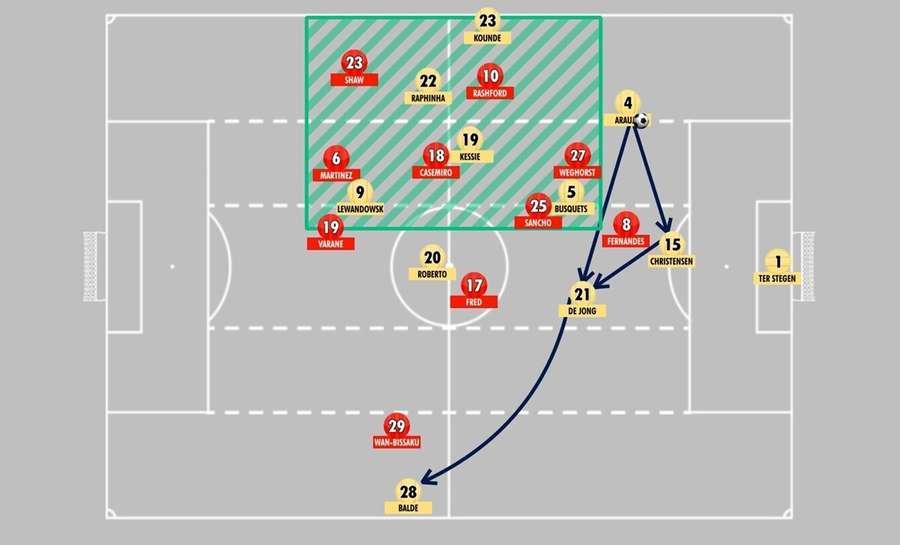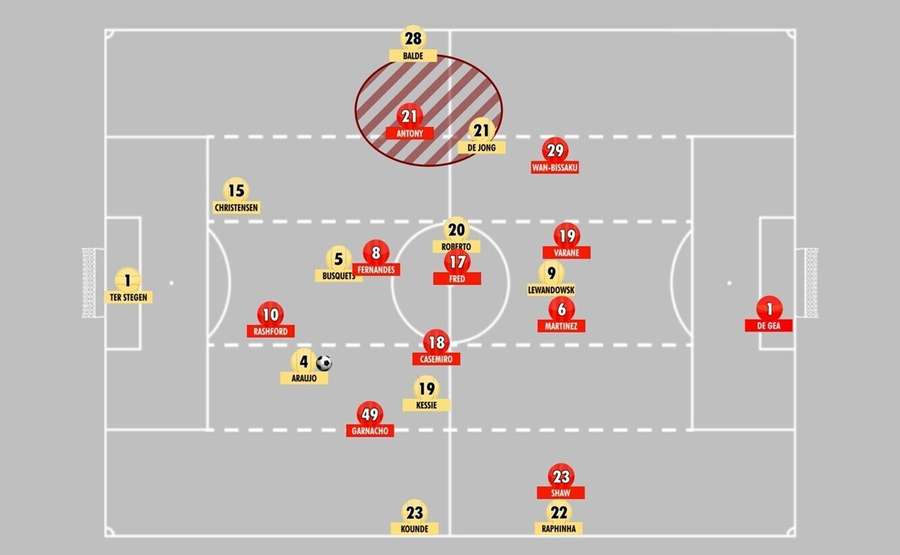Data-driven manager of the month: Erik ten Hag leads United out of the darkness

Erik Ten Hag took over Manchester United in the summer and although the vast majority of experts predicted that the team would finish fifth or sixth in the Premier League table, excellent performances and results have helped the Red Devils to third place, where they are likely to stay until the end of the season.
Our models say they are 85% likely to remain in the Champions League places and still have a 3% chance of winning the title.
Hybrid pressing their way to heaven
United had an extreme amount of games in February. They stood out from their Premier League rivals by the fact that they were still in every cup competition by the end of January.
They started the month by beating Nottingham Forest to secure a place in the League Cup final. Then, two weeks later, they had to face a double-header against the Spanish league leaders in the first round of the Europa League knockout stages.
In the first match against Barcelona, United opted for a strategy of controlling the middle of the pitch with the help of a hybrid press. This is a method through which players defend by both man-marking and in a zonal manner.
With this system, Ten Hag utilises tactical nuances that are not implemented too often by other contemporary managers. Most coaches would let their best defenders mark their opponent's biggest threat, which would usually mean doubling up on Robert Lewandovski (34) when playing Barcelona.
However, Ten Hag prefers to let his winger defend two players at once, giving a free defensive role to Casemiro (31), who can then defends wherever he is most needed.
The match ended 2-2, but according to the mathematical model of expected goals, Manchester United created many more chances and should have won the match - the final xG values were 2.32 - 1.36 in favour of United.
A 3-0 league win over Leicester was followed by a home rematch with Barca and Ten Hag's opposite number Xavi proved what a great coach he is in this encounter.
United tend to close teams down on one side of the pitch and overload a large number of players wherever the ball happens to be. To counter this, Xavi outnumbered the green-shaded area of the field (which you can see below), luring United's players there as a sort of magnet of distraction.
They then switched the ball with lightning speed - and mostly through the feet of Frenkie de Jong (25) - into the open space around Alejandro Balde (19).
De Jong's and Balde's dribbling was a huge weapon for Barcelona in that game and both of these players dominated the first half.

Ten Hag's response to this came in the form of a half time substitution, sending on his most criticised summer purchase in place of striker Wout Weghorst (30).
Antony's (23) arrival with a price tag of €95million has largely resonated amongst fans as money overspent on a player who doesn't have that much offensive impact. However, Antony has one strength that the fan community underestimate - his brilliant decision-making in defence.

In the same system, Antony made Casemiro's job easier by being able to both defend De Jong and help Aaron Wan-Bissaka (25) mark Balde. De Jong moved further out to the wing, as you can see in the second picture above, but that was of no use to Barcelona as they only managed one interesting shot after the break.
Thanks to this tactical tweak, United advanced past one of the best teams in the world. Moreover, a few days later, they had the Carabao Cup final to play at Wembley, where they faced a dangerous Newcastle United.
Casemiro the key
Knowing that the team had a tough game against Barcelona in its legs and that Newcastle play physically demanding football with quick transitions into attack, Ten Hag set up a deep block in order to eliminate the threat of Newcastle's wingers.
Offensively, the goal was to win balls in the middle of the field and give it to Marcus Rashford (25) and Anthony. Newcastle had superior ball possession and created several chances, but United converted theirs before the first half was over and went into the locker rooms with a 2-0 lead in the bank.
In the second half, Newcastle manager Eddie Howe sent on striker Alexander Isak (23) and changed the formation to a 4-4-2. Ten Hag responded to this move by moving his block even lower. Fred (29) and Bruno Fernandes (28) man-marked Joelinton (26) with Bruno Guimaraes (25), while Casemiro moved in the space in front of the centre backs to prevent the opposing players from outnumbering them.
The Brazilian defensive midfielder put in another fantastic performance and thanks to his strong contribution, United were controlling the game defensively and only allowed Newcastle one significant chance for the remainder of the match.
In the league, it should be pointed out that Ten Hag's team did not lose once in February and picked up 10 points in four games despite missing their key man Casemiro in three of them due to a suspension.
There were some extra holes in the defence during these games but goalkeeper David de Gea (32) performed excellently in the important moments and United's offensive line, led by Rashford, was brilliant.
Considering the data and the associated points made above, it's fair to say that Ten Hag - our data-driven manager of the month - did an excellent job at United in February.
